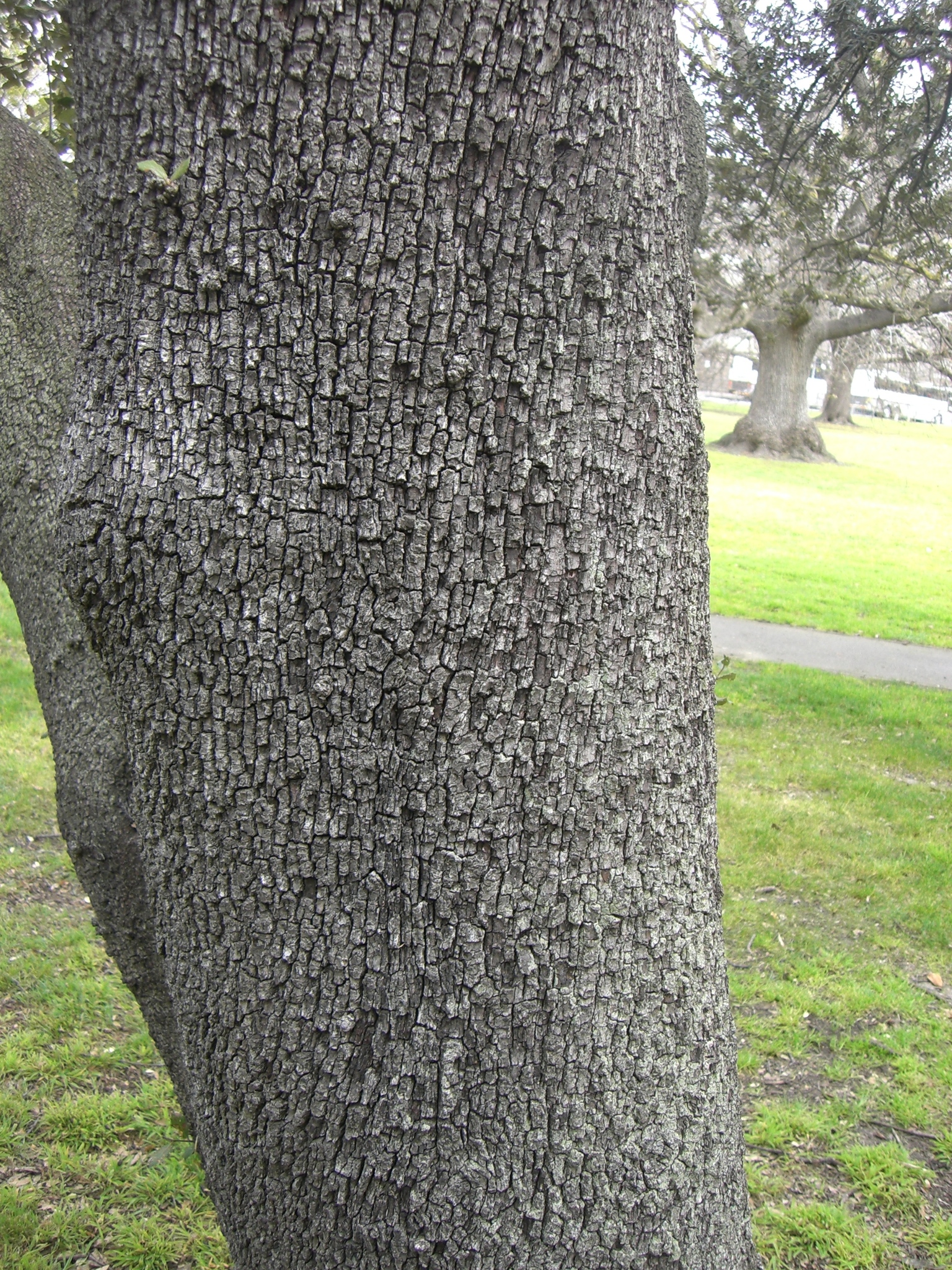
Evergreen broad-crowned tree to 20 m or more tall, sometimes with multiple trunks at the base. Bark more or less smooth at first, blackish with small scales on older trees. Branches pendulous at the base on large trees. Young shoots grey hairy. Leaves leathery, elliptic to narrowly ovate or lanceolate, mostly 3-6 cm long with an acute tip, base rounded or tapering, margin usually entire and sometimes wavy but occasionally with teeth, hairy when young becoming dark glossy green above and white hairy below. The juvenile leaves tend to be more holly-like that the mature ones. Leaf stalk 0.5-1.5 cm long. Fruits in clusters of 1-3, mostly 2-3 cm long, half enclosed in the cup and ripening in 1 season.
Mediterranean
Found in old public parks and gardens throughout SE Australia but widely planted in Sydney and New South Wales and especially popular about the turn of the century. Some specimens with irregular characters are possible hybrids with Q. suber. Trees with exceptionally narrow and glossy dark green leaves (as, for instance, Lakeside Hospital Ballarat, Victoria) are sometimes referred to the cultivar 'Fordii'.
Bark blackish; leaves small, tough, mostly entire, narrowly ovate to elliptic, white-hairy below.
SA: Adelaide Botanic Garden; Glenelg (street trees in Moseley St). ACT: Ainslie (Bonney St); Red Hill (Tower St). NSW: Bathurst (Base Hospital); Jenolan (Caves); Orange (Cook Park); Sydney (Centennial Park; Royal Botanic Garden); Wagga Wagga (many in Collins Park). VIC: Ballarat (Ballarat Botanical Gardens; edge of Lake Wendouree; Lakeside Hospital, narrow leaved form); Caulfield (Caulfield Park, many); Clifton Hill (Darling Gardens); Moonee Ponds (Queens Park); Geelong (Geelong Botanic Gardens); Fitzroy (Edinburgh Gardens, 22 m in 1993); Glenthompson (S side of main highway on stream bank); Heidelberg (Heidelberg Park); Melbourne (Flagstaff Gardens, 20 m tall in 1983); Kurrumburra (Primary School); Malmsbury (Malmsbury Botanic Gardens); Malvern (Malvern Gardens); Warrigal (town centre, by public offices). TAS: Hobart (Cathedral Church of St David cnr Murray and Macquarie Sts, exceptional old specimen tree); Latrobe (Gilbert St, tree 94 years old in 1995); TRoyal Tasmanian Botanical Gardens.
Similar but rarely cultivated species are as follows:
Q. virginiana Mill., Live Oak from SE USA has a distinctive constriction at the tip of the acorn and leaves that are mostly widest above the middle with a rounded tip, margins tucked under, and a tapering, not rounded, base; there are specimens in New South Wales in Sydney at Centennial Park (large tree), the Royal Botanic Garden Sydney, and Paddington (grounds of the Scottish Hospital), also at Central Park, Armidale.
Q. wislizenii DC., Californian Evergreen Oak, differs in not having leaves hairy below; it is grown at the Royal Botanic Gardens Victoria (Melbourne Gardens) on the Oak Lawn and at Westbourne Woods, Canberra.
Source: (1997). Fagaceae. In: . Horticultural Flora of South-eastern Australia. Volume 2. Flowering plants. Dicotyledons. Part 1. The identification of garden and cultivated plants. University of New South Wales Press.
